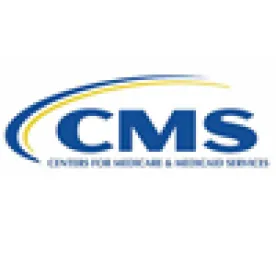The Centers for Medicare and Medicaid Services has issued long-awaited draft guidance addressing the use of shared space and contracted services. Though aiming to increase transparency into the scope and interpretation of its co-location expectations, the guidance fails to address many common co-location concerns. Stakeholders are invited to submit comments on the draft guidance by July 2, 2019.
IN DEPTH
On May 3, 2019, the Centers for Medicare and Medicaid Services (CMS) issued guidance to State Survey Agencies addressing hospital co-location arrangements (Draft Guidance) under the Medicare hospital Conditions of Participation (CoPs). The Draft Guidance addresses use of shared space and contracted services. Stakeholders may submit comments on the Draft Guidance through July 2, 2019.
Background
In recent years, hospital surveys for compliance with Medicare CoPs have increasingly focused on arrangements where a hospital is co-located with another entity that is separately enrolled in Medicare. CMS considers a hospital to be co-located with another entity when the hospital and other entity are located in the same building or on the same campus (i.e., within 250 yards of each other) and share space, staff or services. Such arrangements may prevent a hospital from demonstrating separate and independent compliance with the hospital CoPs.
Previous sources of co-location guidance were limited to informal presentations by CMS staff to private organizations (memorialized in written slide decks and widely distributed within the stakeholder community) and ad hoc interpretations made by CMS or state agencies at the time of survey. This approach resulted in inconsistent interpretations and confusion regarding the permissibility of even long-standing (and often previously surveyed) co-location arrangements. In the Draft Guidance, CMS seeks to provide clarity about how space, services and staff can be co-located in a manner that permits hospitals to demonstrate independent compliance with the CoPs.
Distinct Space and Shared Space
CMS has long stated that a hospital is expected to have defined and distinct spaces of operation and to maintain control over such spaces at all times. Given the inconsistent survey interpretation, hospitals have struggled to identify which spaces could be shared. The Draft Guidance reiterates CMS’s historical position that co-location poses a threat to patient safety and right to privacy, while taking steps to distinguish between spaces that constitute “clinical space” and may not be shared and those that are “public space” and may be shared without presenting such risks. The Draft Guidance generally describes clinical space as non-public space where clinical care occurs, and public space as those spaces or paths of travel used by the public and both co-located entities.
The chart below provides examples from the Draft Guidance of each category of space.

The Draft Guidance confirms CMS’s position that a path of travel to reach one co-located provider that requires travel through the clinical space of a co-located hospital, such as an inpatient unit or other clinical department, would violate the co-location rules. The Draft Guidance distinguishes between an impermissible path of travel through a clinical space and a permissible path of travel through public space, such as through the main hospital lobby, or a hospital corridor with clearly labeled, distinct entrances to hospital departments (e.g., outpatient medical clinic, laboratory, pharmacy, radiology).
The Draft Guidance specifies that surveyors must request and review floor plans that clearly distinguish the space used by the hospital from the space used by any co-located entity. While review of floor plans has been a common feature in surveys, adding the specific requirement for review of plans for co-location issues ensures that surveyors will continue to focus on this area. Accordingly, it remains advisable for hospitals to maintain current, clear floor plans that identify which entities are using space, and carefully monitor instances of co-location as part of survey readiness activities. Surveyors are also advised to request and review a full list of the hospital’s contracted services. While maintaining such a list has been a CoP and accrediting organization requirement for many years, its inclusion in the Draft Guidance makes it clear that hospitals need to remain vigilant in maintaining such lists in an updated and complete form. Non-compliance found in surveyed space could be considered non-compliance for both entities and surveyors may initiate a complaint for the other entity not being surveyed.
Contracted Services / Staffing Contracts / Clinical Services Contracts
The Draft Guidance specifies that a hospital is responsible for providing all of its services in compliance with the hospital CoPs, and acknowledges that services may be provided under contract or arrangement with another co-located hospital or entity. The list of “example” contracted services includes the often recited laboratory, dietary, food preparation, housekeeping and utilities, as well as pharmacy services. The Draft Guidance does not specify which services may not be contracted, which is a frequent question.
Each hospital is responsible for independently meeting its staffing requirements, regardless of whether it provides the services directly or under arrangement with another entity, which may be the entity co-located with the hospital. The Draft Guidance notes that contracted staff must be assigned solely to work for one entity during any given shift; staff may not “float” back and forth between entities or perform services simultaneously for two co-located entities. Medical staff are exempt from this limitation, provided that they hold privileges at both co-located providers. The Draft Guidance does not confirm whether contracting for intermittent services provided by non-physicians, such as specialty nurse consults for wound care, peripheral placed central lines or other services would be permitted even in circumstances where those professionals are providing services at only one provider at a time on an intermittent basis. What constitutes a “shift” is currently open to interpretation, as hospitals may schedule staff on varying shifts and for varying lengths of time per shift.
The Draft Guidance specifies that a hospital’s governing body must be prepared to confirm that any contracted clinical services are not being simultaneously “shared” with another hospital or entity, describe how the hospital monitors the performance of its contracted services, and demonstrate how the hospital ensures that all individuals providing services under contract have been oriented and trained in accordance with hospital policies and procedures. Accordingly, the Draft Guidance places ultimate responsibility for co-location matters on the hospital governing body. As a result, a survey finding of non-compliance related to co-location will result in a deficiency under the governing body CoP as well as any other relevant CoPs.
Emergency Services
The current CoPs provide that hospitals without emergency departments must nonetheless have appropriate policies and procedures in place to address patient emergencies. The Draft Guidance specifies that hospitals may contract with another hospital or entity for the appraisal and initial treatment of patients experiencing an emergency, but only if the contracted staff are not working/on duty simultaneously at another hospital or health care entity. Under the Draft Guidance, it may be appropriate for a hospital to transfer a patient to the co-located entity for continuation of care after appraisal and initial treatment (e.g., between a rehabilitation hospital and an acute care hospital for a patient suffering a heart attack).
However, the Draft Guidance calls into question the ability of co-located hospitals to contract with the other hospital or provider for the provision of “code team” or “rapid response team” services, which has been a frequent co-location question. For co-located hospitals, especially where one hospital is significantly smaller, or the co-located operations are limited to outpatient care, it is impractical and burdensome to maintain such teams. Restricting the ability to contract for these services from the larger co-located hospital may present access challenges for patients who may need such care, without an articulated safety rationale.
The Draft Guidance also states that hospitals without emergency departments that contract for emergency services with another hospital’s emergency department are considered to provide emergency services and must meet the requirements of EMTALA. It is not clear whether this provision is intended to apply where a hospital without an emergency department contracts for a co-located hospital to actually provide it with staffing for an emergency department, or if the intent is that by virtue of contracting for some level of emergency services beyond appraisal and initial treatment, the hospital is expected to comply with EMTALA. Clarification is needed to fully understand the extent of this provision.
* * *
While the Draft Guidance represents CMS’ desire to increase transparency into the scope and interpretation of its co-location expectations, the Draft Guidance, continues to leave open many common co-location concerns such as the manner in which co-located providers may each use a common and interoperable electronic medical record system. The Draft Guidance also fails to address separateness requirements of any other Medicare-participating entity, such as psychiatric or long-term care hospitals or units, independent diagnostic testing facilities, durable medical equipment suppliers, ambulatory surgery centers or rural health clinics.
Comments to the Draft Guidance are due by July 2, 2019.






 />i
/>i
